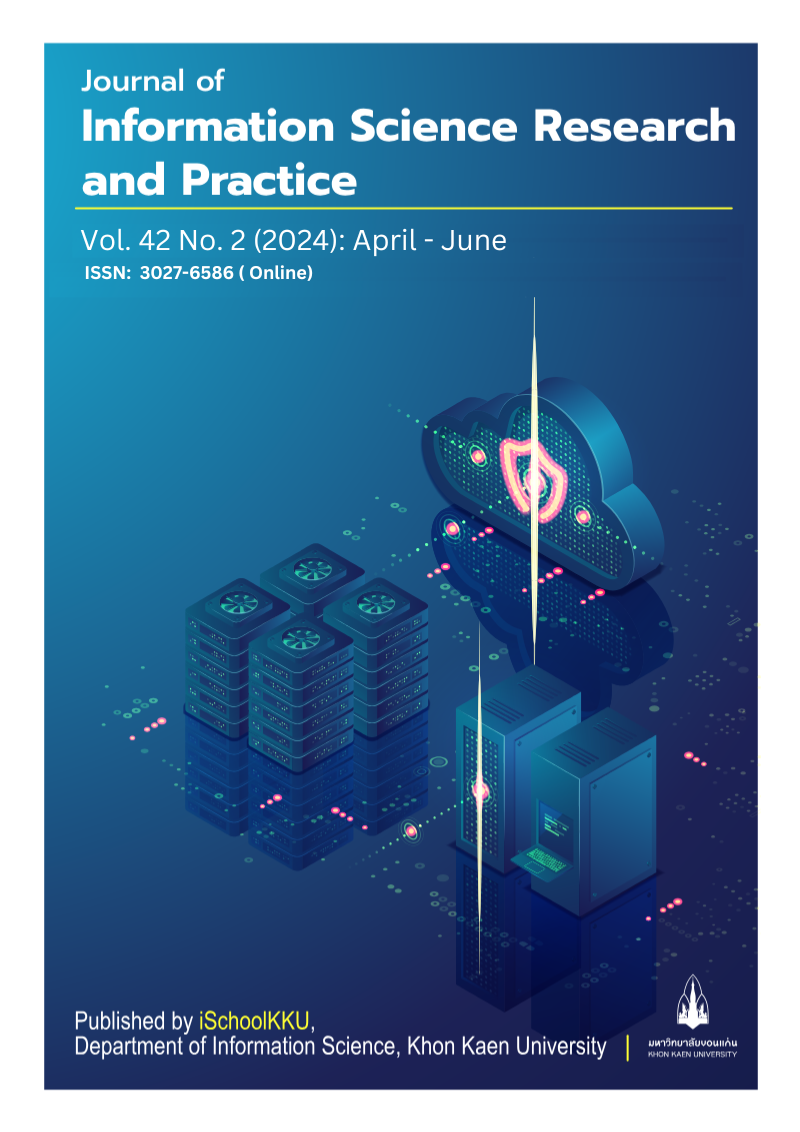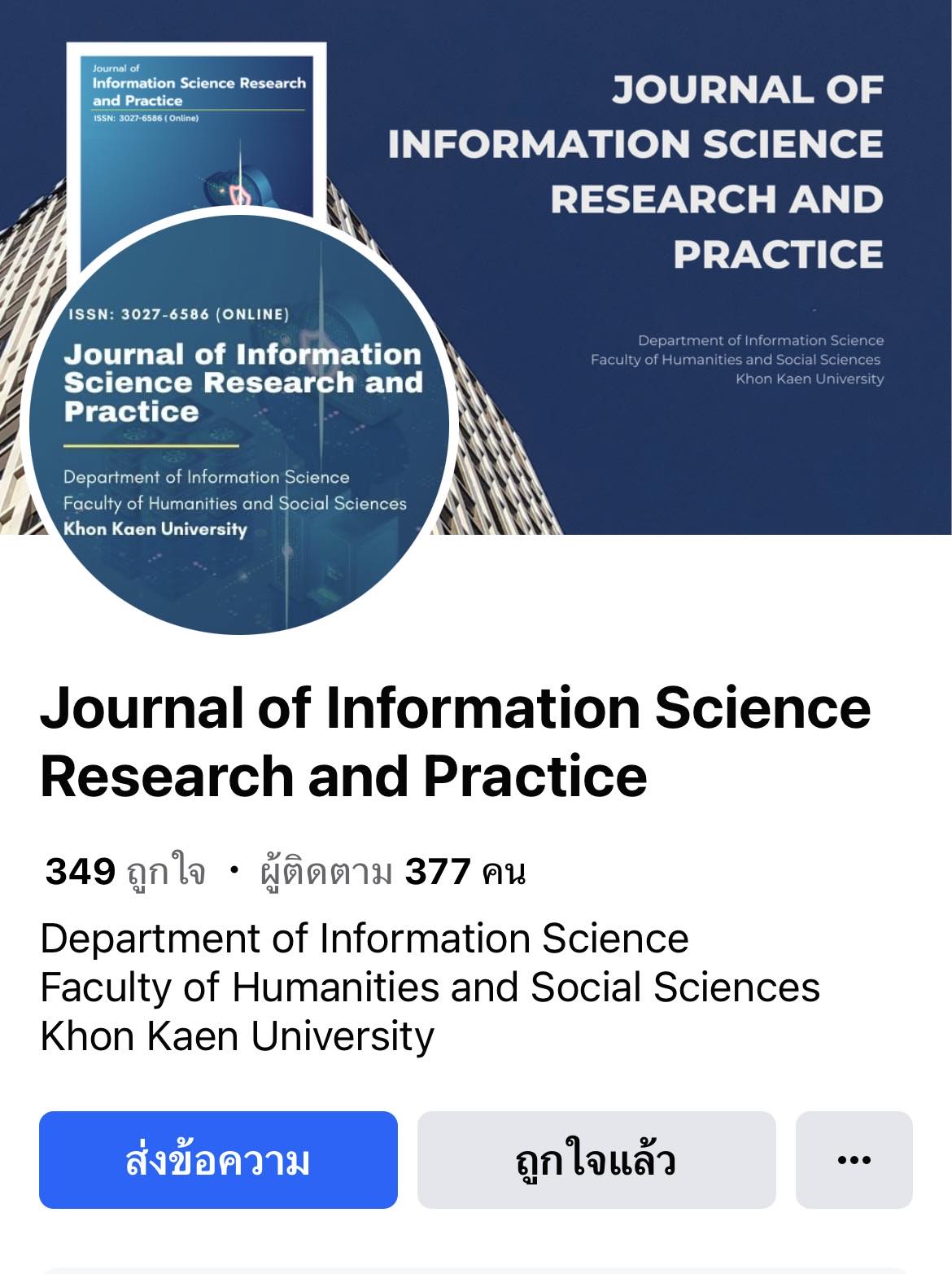The Development of Disaster Relief Systems for The Royal Thai Air Force Utilizing Geographic Information Systems with Line Application
DOI:
https://doi.org/10.14456/jiskku.2024.11Keywords:
Disaster relief, Geographic Information System (GIS), Line ApplicationAbstract
Purpose: 1) To develop an integrated Geographic Information System (GIS) to serve as a tool for executing relief operations and disaster mitigation missions of the Royal Thai Air Force. 2) To apply the Line Application system for monitoring, commanding, receiving, and transmitting disaster relief data between central operators and field personnel. 3) To attain a supportive information system that facilitates and enhances operational efficiency in disaster relief efforts of the Royal Thai Air Force.
Methodology: The research employed the System Development Life Cycle Model (SDLC) framework. This involved the planning and analysis of system requirements, the design of the system, followed by its development and testing, and concluding with a post-implementation evaluation. The system was tested by 508 personnel of the Royal Thai Air Force actively engaged in disaster relief and mitigation tasks.
Findings: The adoption of a GIS combined with the Line Application significantly enhanced communication efficiency between field operatives and central command units, resulting in more rapid and effective communication during operations. The user satisfaction with the system was rigorously assessed across four dimensions: alignment with operational requirements, operational accuracy, user-friendliness of its design, and system stability. The findings revealed an overall high satisfaction rate, with an average arithmetic mean of 4.40 and a standard deviation of 0.24.
Applications of this study: The findings of this study have potential applications in surveillance, patrolling missions, and in enhancing the security protocols of various agencies.
Downloads
References
Anchuen, P., Daungklang, P., & Wongkamchang, P. (2022). A comparative study of classifiers for Analyzing agricultural land use. (In Thai). NKRAFA Journal of Science and Technology, 18(2), 16–25.
Anucharn, T. (2021). Analysis of suitable areas for shelters and evacuation routes: a case study of the flood areas in Khlong Nathawi Subwatershed, Songkhla Province. (In Thai). Journal of Science and Technology Mahasarakham University, 39(2), 224-236.
Kamching, R., & Homhuan, S. (2020). Information system for supporting surveillance and warning of natural disasters, uttaradit province. (In Thai). Area Based Development Research Journal, 12(4), 272-288.
Line Developer. (2023). Messaging API overview. Retrieved from https://developers.line.biz/en/docs/messaging-api/overview/
NaRanong, A. (2019). Flood news consumption, warning systems, and flood management during flood crises outside the bangkok municipatory area. (In Thai). UMT POLY Journal, 16(2), 493-502.
nPerf. (2023). 3G / 4G / 5G coverage map, Thailand. Retrieved from https://www.nperf.com/th/map/TH/-/-/signal/
Pargaonkar, S. (2023). A comprehensive research analysis of software development life cycle (SDLC) agile & waterfall model advantages, disadvantages, and application suitability in software quality engineering. International Journal of Scientific and Research Publications, 13(8), 120–124. https://doi.org/10.29322/ijsrp.13.08.2023.p14015
Pechdee, S., & Utainarumol, S. (2021). Application of geographic information systems to transfer flood victims to temporary shelters. (In Thai). Proceeding National & International Conference, 1(12), 784-794.
Ruenphongphun, P. (2022). The development of computer labs reservation system via line official account for students of the faculty of management science in Rajabhat Rajanagarindra University. (In Thai). Journal of Management Science Review, 24(2), 75–85.
Sathidbhattarasombad, C., & Daungklang, P. (2021). Geo-informatics and communications via cellular networks in aircraft tracking for search and rescue: an application. (In Thai). NKRAFA Journal of Science and Technology, 17(1), 60–70.
Sornin, K. (2018). The increasing efficiency for POS system in the coffee shop business with LINE chat bot. (In Thai). CRMA Journal, 16(1), 25–40.
Sutharak, S., & Daungklang, P. (2022). Geographic information system-based integrated imagery sensing system for military operations. (In Thai). NKRAFA Journal of Science and Technology, 18(1), 26-37.








